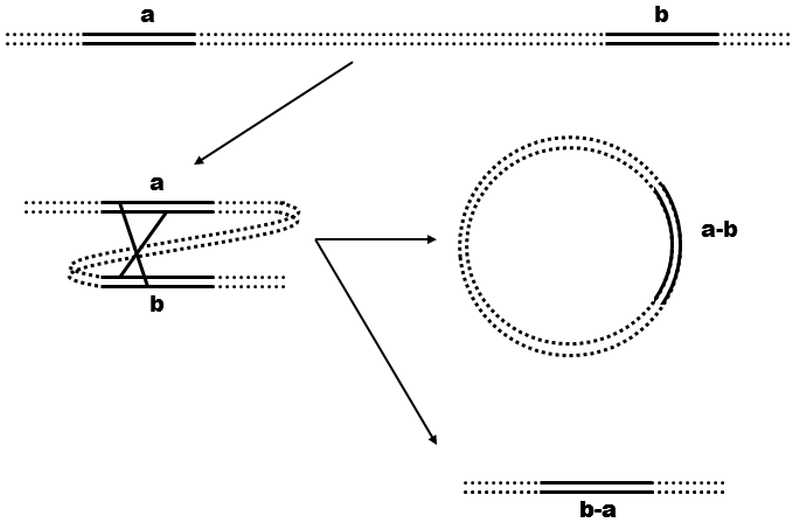VI.2.2.2 In transposition, a DNA segment is transferred to a different place in the genome.
Transpositions are of great importance for proliferation of the individual variants of repetitive DNA within the genome and gene pool. There are a number of transposition mechanisms. In simple transposition, the particular DNA segment at the particular locus is cut out and inserted in a different place in a genome. The number of copies of the given segment is thus not changed in the genome; however, in sexually reproducing organisms, the particular variant may “infect” a new chromosome. Some types of transpositions are also accompanied by multiplication of the particular DNA segment. In replicative transposition, the copy of the relevant segment is not cut out of the original locus, but its sequence is simply copied to a different locus within the genome. This occurs in that, at the time of DNA replication, one of the two copies of the gene contained in the already replicated part of the genome can be transferred to the so-far unreplicated part of the genome.A great many DNA transposones are proliferated in this way. Retrotransposition, which proliferates retrotransposones and retroviruses, is another mechanism of multiplication of repetitive DNA segments. In retrotransposition, i.e. RNA-mediated transposition, first a certain DNA segment is transcribed (repeatedly) to RNA; then this RNA is transcribed back to DNA through RNA-dependent DNA-polymerase (reverse transcriptase) and is inserted in various places in the chromosome DNA.

Fig. VI.5. Deletion of a DNA segment due to unequal crossing-over. If two segments with a high level of sequential homology are located a suitable distance apart (in our case, segments a and b), it can readily occur that recombination between two segments that are located on the same molecule can occur during meiosis or DNA reparation. This leads to cutting out of the segment occurring between segments a and b in the form of a circular molecule.
